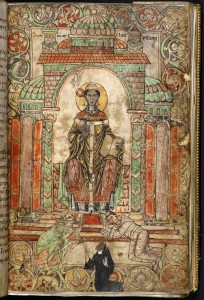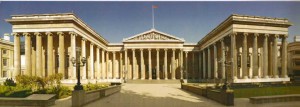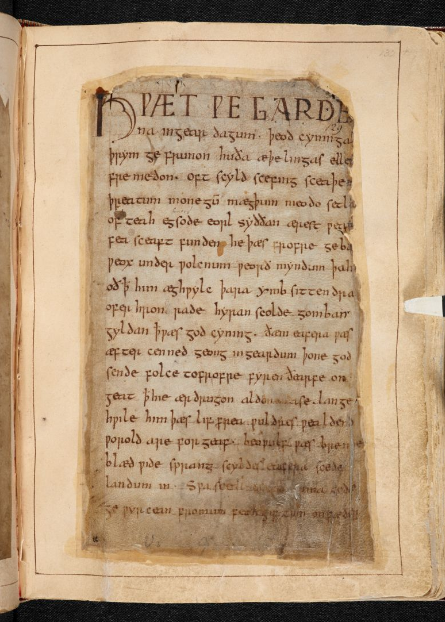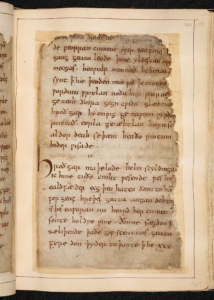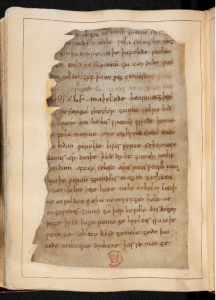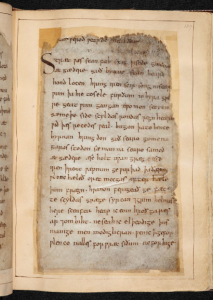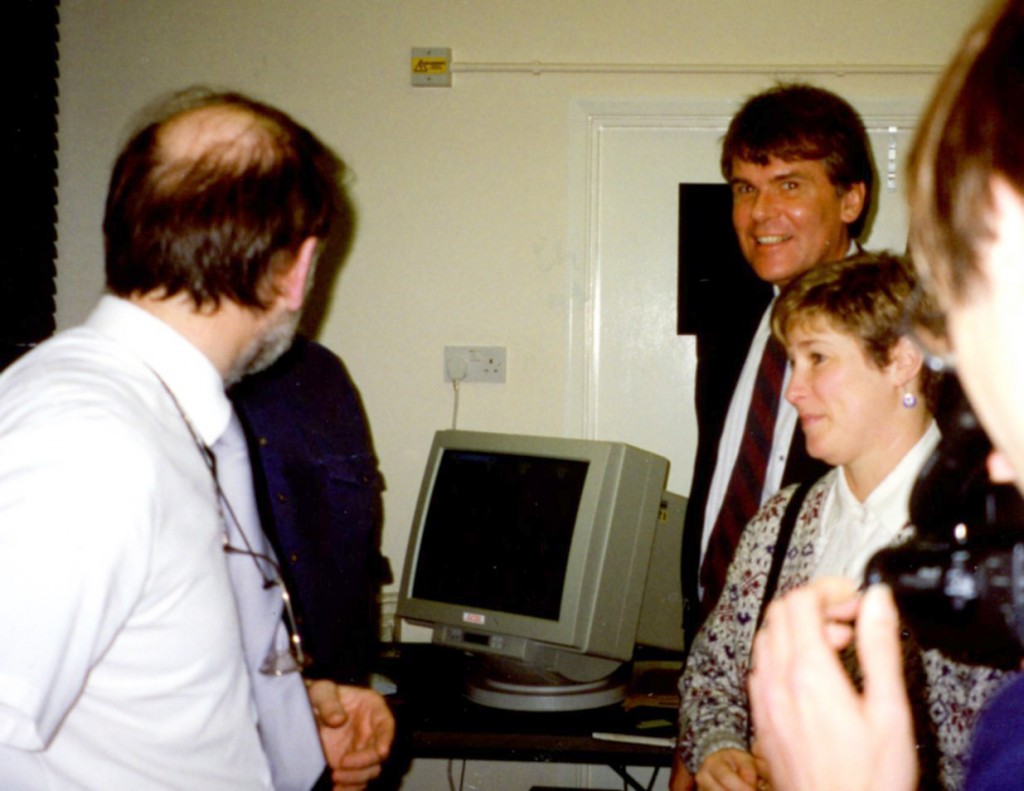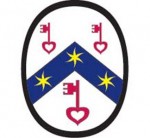“Imaging Aids in the British Library” (December 1993)
September 5, 2016 in Seminars on Manuscript Evidence
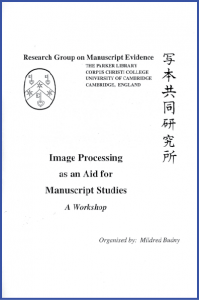 A Visit
A Visit
to the British Library
by the Research Group on Manuscript Evidence
15 December 1993
In preparation for the Workshop
on Image-Processing and Manuscript Studies”
at the Parker Library on 15 January 1994
in the Series of
Research Group Seminars on ‘The Evidence of Manuscripts’
The Parker Library, Corpus Christi College, Cambridge
[First published on our website on 5 September 2016]
A 1-day visit to the British Library in December 1993 prepared for the Research Group’s January 1994 workshop on optical imaging techniques as aids for manuscript studies.
Organised by Mildred Budny and Tony Parker and held at the Parker Library, that approaching workshop on Image-Processing for Manuscript Studies” aimed to consider developments in imaging through photographic and computerised methods, as a means of gathering information and feedback about techniques of image processing, both existing and planned, with a view toward applications, capabilities, limitations, desiderata, and future potential.
Participants at the workshop would include experts in manuscript studies, conservation, photography, imaging aids, computing, radio astronomy, engineering, forensics and medical imaging. The speakers would come from the Research Group on Manuscript Evidence, the University of Cambridge, the British Library, the University of Kentucky, the Questioned Documents Section of the Metropolitan Police Forensics Laboratory, Ipswich Hospital, and Keith & Pelling Ltd. The other participants would come from both near and far.
Meanwhile, there were elements of information to gather and materials to prepare.
Fact-Finding, Demonstrations, and Explorations
The Visit took place in the Manuscripts Conservation Studio of the Collection and Preservation Directorate of The British Library. At the time, remember, The British Library (created on 1 July 1972 as a result of the British Library Act 1973) still remained in its “old” building, before the move in 1999 to the new building, specially built for the purpose, on the Euston Road, Number 96. That is, the British Library remained in the same building as The British Museum, out of which it had emerged as an entity of its own. The Department of Western Manuscripts remained in its domicile, in the East Wing of the building (designed in Greek Revival Style by Sir Robert Smirke and completed in 1852), facing Great Russell Street and the Front Entrance. The Manuscripts Conservation Studio occupied quarters in the Basement below.
During the years of her long-term research on manuscripts at The British Library for the Ph.D. (London 1984), Mildred Budny (a founder member and by now Director of the Research Group on Manuscript Evidence) had been a frequent visitor to the Manuscripts Conservation Studio, at Tony Parker’s invitation, to learn about new equipment, new techniques, and new discoveries as part of the conservation work on many forms of materials, manuscript and other. As a result both of such visits and meetings elsewhere, conferences included, it was “natural” to learn, for example, about the Beowulf Digitisation Project (1992–) already as it was beginning to take shape and form.
Here, thanks to that Project (and other developments), you may see, right now, here and now, how the sole surviving medieval copy (partly burnt) of Beowulf begins:
On the day, we could inspect the Real Thing, viewed with the relevant equipment, and guided by a founder of the Beowulf Digitisation Project in a formative period. At the January Workshop on “Image-Processing for Manuscript Studies”, Kevin Kiernan also joined the presentations, although that time not in the presence of the manuscript itself, but represented by proxy, and moreover by computer transmission of images via the University of Kentucky to Cambridge. (You may take such representation for granted, nowadays, but we report an earlier stage in the worldwide transformation of the transmission of images of manuscripts, etc . . . )
*****
Report of the Visit, Now with Illustrations
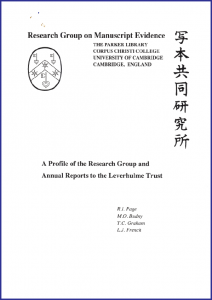 A report of this December Visit appears as an Appendix to the “Preliminary Report” of the 15 January Workshop, printed and circulated as a Booklet after its event. A similar Report for the December Visit to the British Library appears in the Fifth, and Final, Annual Report to the Leverhulme Trust (1993–4) on the 5-year Research Project at The Parker Library on “The Archaeology of Anglo-Saxon Manuscripts” (Leverhulme Trust ref. F665). On the series of Annual Reports, see our Publications.
A report of this December Visit appears as an Appendix to the “Preliminary Report” of the 15 January Workshop, printed and circulated as a Booklet after its event. A similar Report for the December Visit to the British Library appears in the Fifth, and Final, Annual Report to the Leverhulme Trust (1993–4) on the 5-year Research Project at The Parker Library on “The Archaeology of Anglo-Saxon Manuscripts” (Leverhulme Trust ref. F665). On the series of Annual Reports, see our Publications.
We now transcribe the Report here, for you to see both on our website and in our Research Group font Bembino — our own copyright font, designed over more recent years by one of the participants of this Visit. (You may download this font for FREE here.) You may also view the Appendix on its original page in the downloadable Booklet. Here, we add some links and, by permission from The British Library, several images from the relevant manuscripts examined during the Visit.

